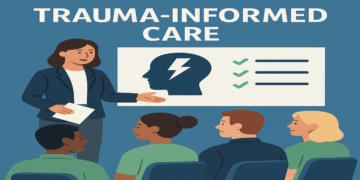Negative behavior in the workplace can have a detrimental impact on morale, productivity, and overall company culture. Understanding the nature of negative behavior, identifying its signs and symptoms, and implementing effective strategies to discourage it are crucial for fostering a positive and productive work environment.
Defining Negative Behavior
Negative behavior in the workplace can manifest in various forms, including:
- Disruptive behavior: This encompasses actions that hinder the work environment, such as excessive noise, interruptions, or creating distractions.
- Aggression: This includes physical or verbal aggression, threats, bullying, and harassment.
- Theft: This refers to the unauthorized taking of company property or information.
- Sabotage: This involves intentionally damaging or destroying company property or disrupting work processes.
- Substance abuse: The use or misuse of drugs or alcohol in the workplace can lead to decreased productivity, impaired judgment, and increased safety risks.
- Gossiping and spreading rumors: This can damage relationships, undermine trust, and create a toxic work environment.
- Lack of cooperation: Refusing to work collaboratively or contributing to team efforts can hinder productivity and morale.
- Disrespectful behavior: This includes treating colleagues, customers, or clients with rudeness, contempt, or lack of consideration.
Determining Negative Behavior
Identifying negative behavior often involves a combination of direct observation, employee complaints, and performance reviews. Managers and HR professionals should be vigilant in monitoring the workplace for signs of negative behavior and taking appropriate action.
Signs and Symptoms of Negative Behavior
Several signs and symptoms may indicate the presence of negative behavior in the workplace, including:
- Decreased productivity: A decline in individual or team performance can be a sign of underlying issues.
- Increased absenteeism: Frequent absences or tardiness may be indicative of problems, such as stress, burnout, or substance abuse.
- High turnover rates: A high turnover rate can suggest a toxic work environment or poor management practices.
- Complaints and grievances: Employees who are experiencing negative behavior may file complaints or grievances.
- Changes in behavior: Sudden or unexplained changes in an employee’s behavior, such as becoming withdrawn, irritable, or aggressive, can be a cause for concern.
- A hostile or negative work environment: A workplace characterized by tension, conflict, or a lack of trust can be a breeding ground for negative behavior.
Measurements to Prevent Negative Behavior
To effectively address negative behavior, it is essential to implement preventive measures. Consider the following:
- Clear expectations: Establish clear guidelines and expectations for employee behavior, including policies on harassment, bullying, and substance abuse.
- Training and education: Provide training to employees on workplace conduct, conflict resolution, and stress management.
- Open communication channels: Encourage open communication between employees and management to address concerns and issues promptly.
- Employee assistance programs (EAPs): Offer EAPs to provide support and resources for employees dealing with personal or work-related challenges.
- Performance reviews: Conduct regular performance reviews to assess employee behavior and provide feedback.
- Reward positive behavior: Recognize and reward employees for their positive contributions and exemplary behavior.
What Managers Should Do
Managers play a critical role in discouraging negative behavior in the workplace. Here are some key actions they can take:
-
- Address issues promptly: Confront negative behavior directly and in a timely manner.
- Create a positive work environment: Foster a supportive and respectful work culture.
- Lead by example: Demonstrate positive behavior and modeling appropriate workplace conduct.
- Provide support and resources: Offer employees the necessary mental health tools and resources to succeed.
- Document incidents: Keep detailed records of any incidents of negative behavior to support disciplinary actions if necessary.
- Seek professional help: If the situation is severe or involves serious misconduct, consider consulting with HR professionals or legal counsel.
Additional Strategies for Discouraging Negative Behavior
In addition to the measures outlined above, here are some additional strategies that organizations can consider:
- Create a culture of respect: Promote a workplace culture where everyone is treated with dignity and respect.
- Encourage employee engagement: Foster a sense of belonging and involvement among employees.
- Provide opportunities for professional development: Invest in employee growth and development to enhance job satisfaction and morale.
- Implement conflict resolution training: Equip employees with the skills to effectively manage and resolve conflicts.
- Conduct regular employee surveys: Gather feedback from employees to identify potential issues and areas for improvement.
- Offer flexible work arrangements: Consider flexible work options, such as remote work or flexible hours, to reduce stress and improve work-life balance.
- Promote employee well-being: Prioritize employee health and well-being through initiatives such as wellness programs, stress management workshops, and mental health support.
By understanding the nature of negative behavior, identifying its signs and symptoms, and implementing effective preventive measures, organizations can create a healthier, more productive, and positive work environment.









